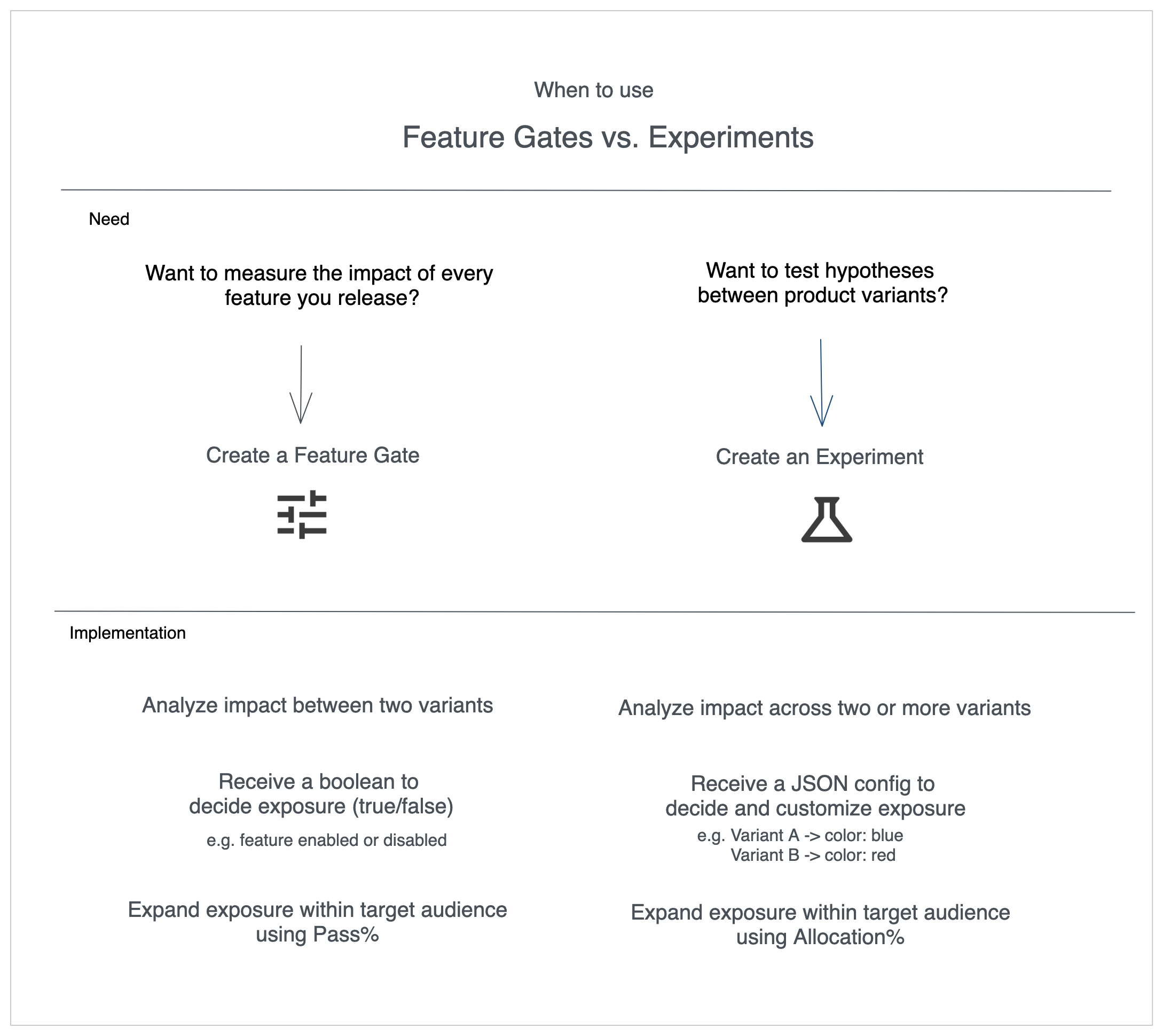In Statsig, feature flags are called feature gates. The terminology is interchangeable throughout this guide.
Quick Guidance
- Choose a feature gate when you want to roll out a feature gradually or monitor impact as you ramp.
- Choose an experiment when you need to compare multiple variants and quantify the lift across metrics.
Key Differences
Variants
- Feature gate → Two experiences only: pass vs. fail.
- Experiment → Any number of variants.
Return Values
- Feature gate → Boolean (
true/false) so your application toggles code paths. - Experiment → JSON config that describes the variant (colors, copy, thresholds, etc.).
Ramping knobs
- Feature gate → Adjust Pass % to send more traffic to the new experience. You can go beyond 50/50 (e.g. 99% vs 1%).
- Experiment → Adjust Allocation % to enroll more users, but splits cap at 50/50.

When Experiments Shine
Use experiments when you need:- Multiple variants or personalization – compare more than two options or tailor experiences via contextual bandits/layers.
- Stable identifiers and custom IDs – analyze behavior before signup with stable IDs, or use custom IDs for sessions, workspaces, or geography.
- Isolated universes – run parallel experiments safely by placing them in their own layers.
When Feature Gates Shine
Feature gates are great for:- Safe rollouts – gradually increase exposure while observing metrics.
- Targeting audiences – use gates as pre-filters before enrolling users in an experiment.
- Targeting gate picks the eligible audience.
- Allocation % (experiment) decides how much of that audience participates.
- Split % distributes participants across variants.
Putting It Together
- Start with a feature gate if you have a single variant to launch carefully.
- Reach for experiments when you need quantitative comparisons across variants.
- Combine both when you want precise audience control plus rigorous measurement.

